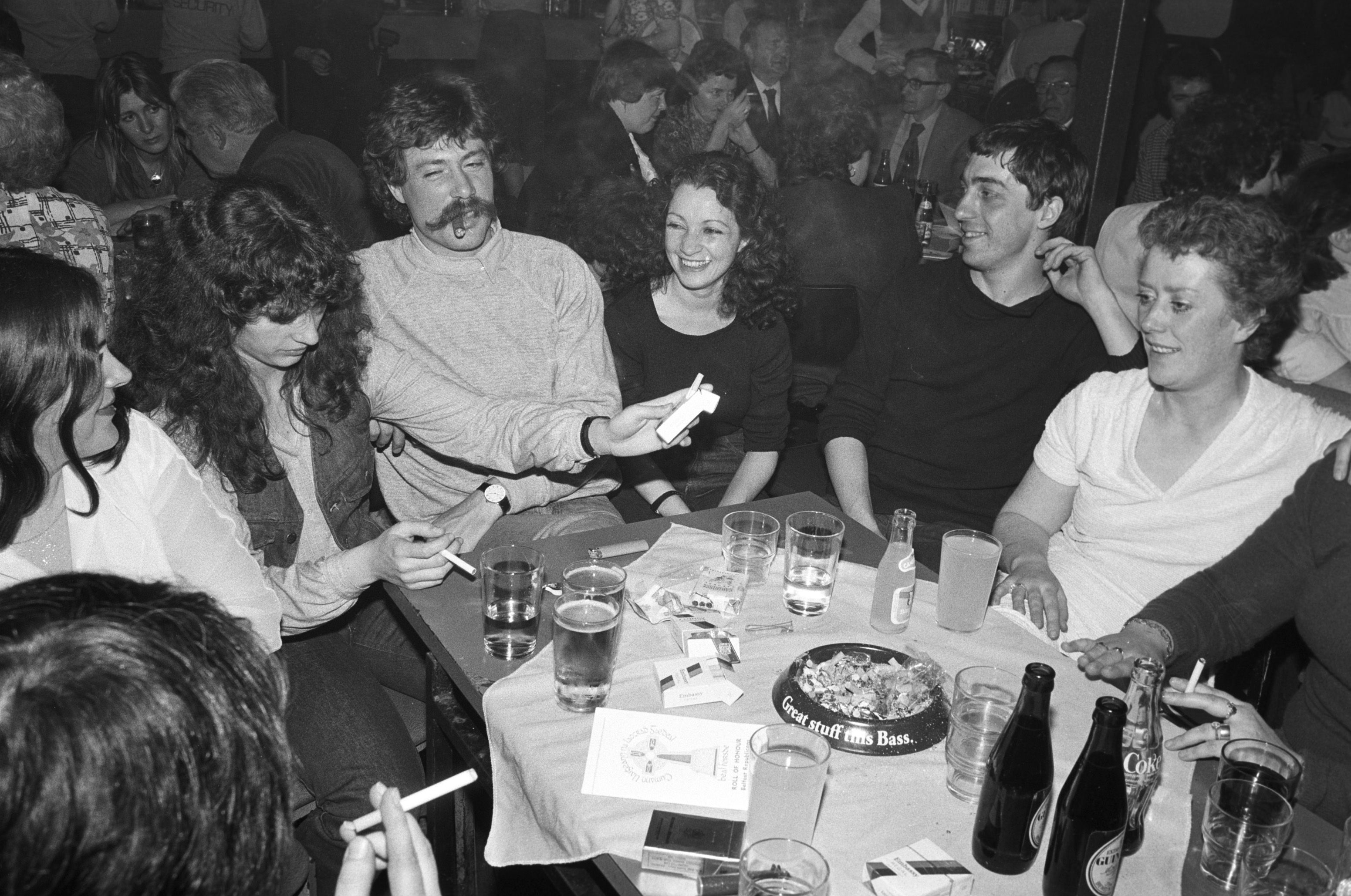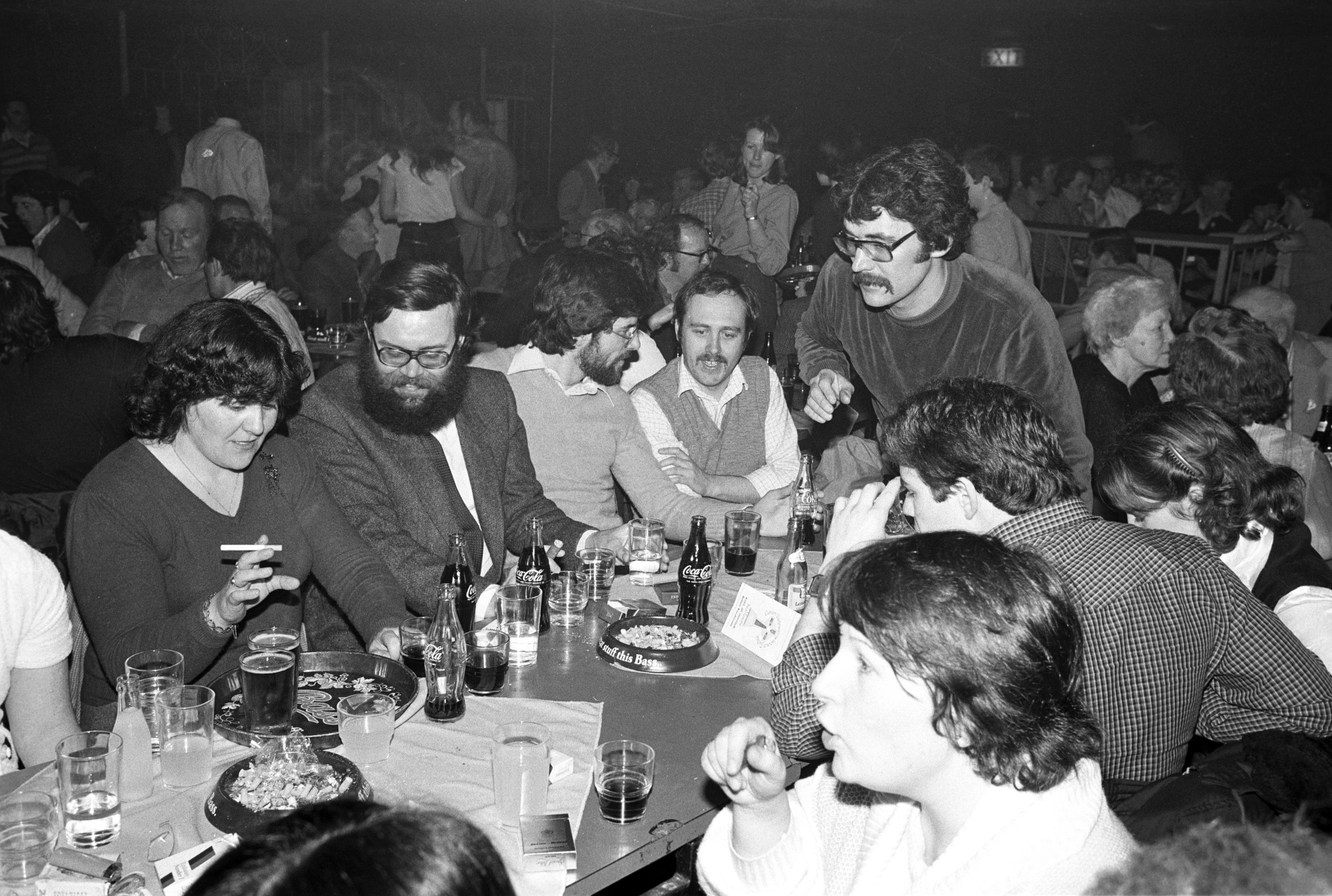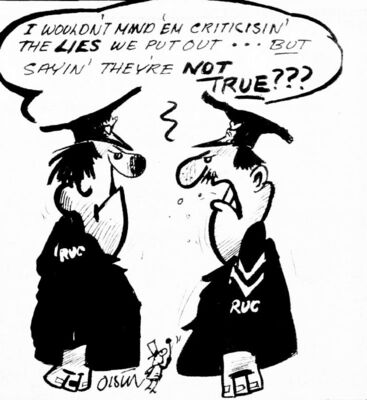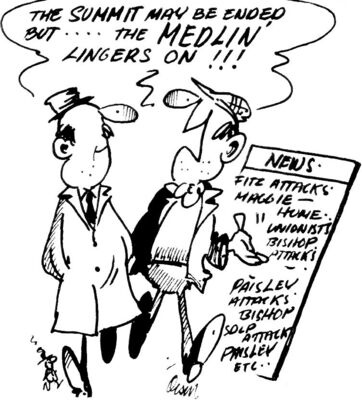We look back at the stories that were making the headlines in the Andersonstown News this week in 1980
Paddy and Mary Brady at Ceilí na Casca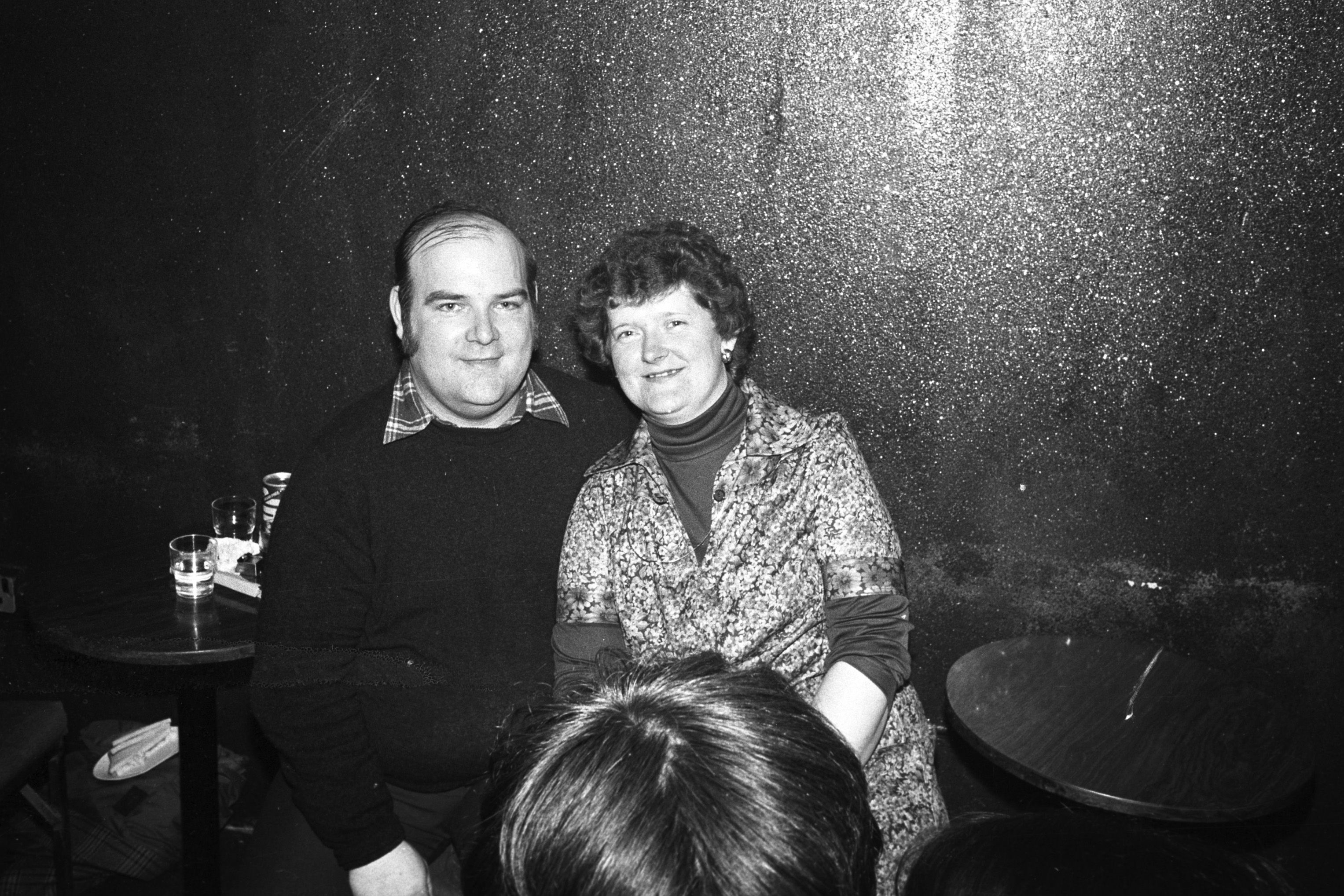
Concern that there will be no graves in Milltown
THE end is in sight for Belfast’s main Catholic burial ground. In about two months’ time, Milltown Cemetery will close its doors to all but existing grave owners, and after 111 years and almost 99,000 burials, no new graves will be available.
There are only about 50 new graves left in the cemetery and these will be allocated to current deaths and cannot be reserved. The lack of space in Milltown has caused a major change in burial tradition in West Belfast over this past couple of years, as more and more Catholics are being buried in the Belfast City Cemetery, which is owned by the Belfast City Council and maintained by the ratepayers.
This break with tradition has been forced upon the Catholic Church by sheer economic necessity, as the cost of developing a new cemetery to replace Milltown has soared to an all-time high. With development costs rising at approximately £10,000 an acre, the Catholic Church felt that it couldn’t afford to provide a cemetery and opted instead for the facilities already available in the city.
Our religious Affairs correspondent writes: Milltown Cemetery, comprising 15 acres of land, was purchased in 1866 by the Bishop of Down and Connor Doctor Dorrian, for the sum of £4,000. The ground was consecrated on 18th September 1870. Ironically, the first person to be buried in the new graveyard was a Mr John Rafferty from Argyle Street on Belfast’s Shankill Road, who was buried on the 28th November 1869.
Eileen Howell, on left, at the Ceilí na Casca, Easter Sunday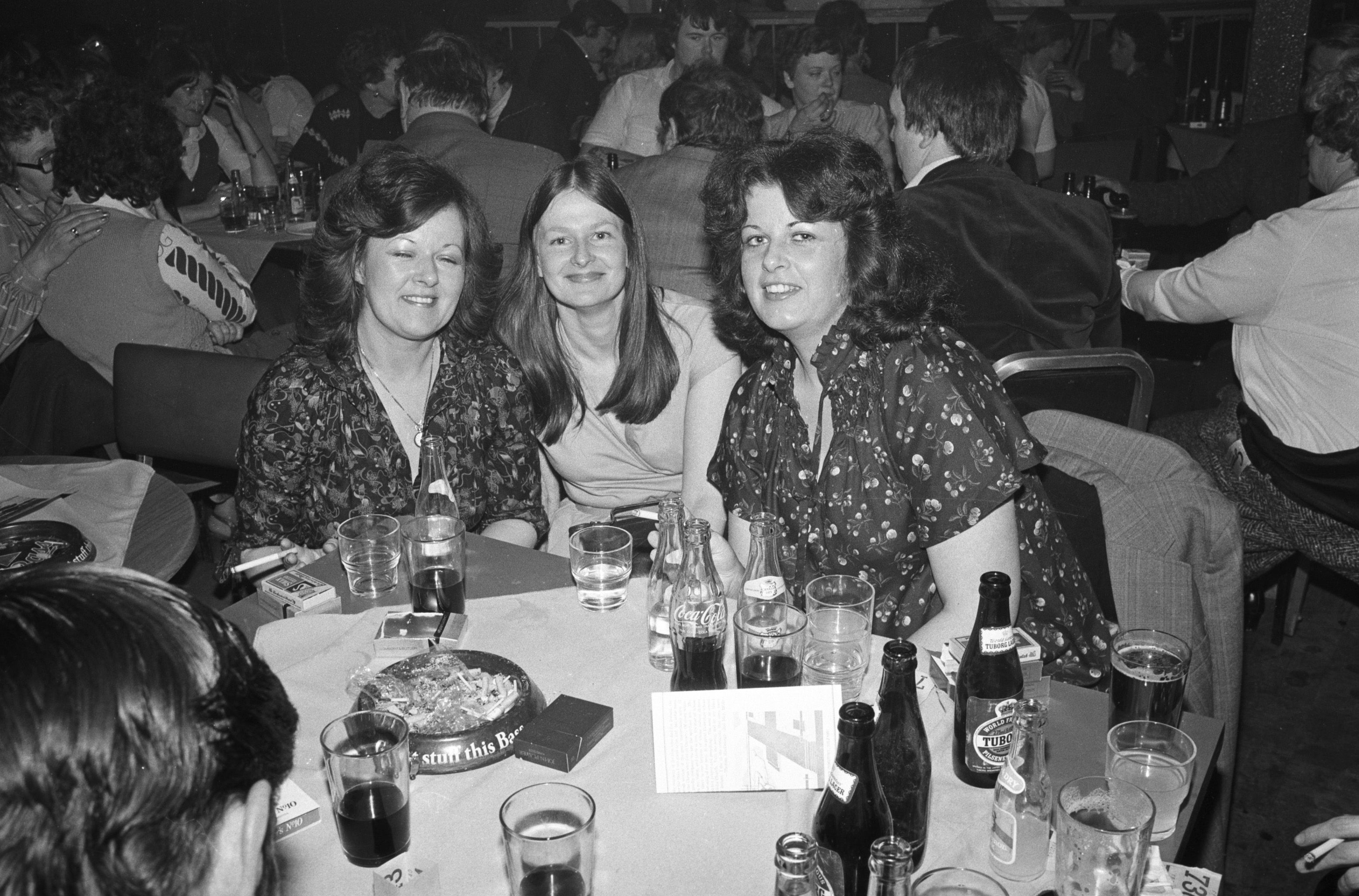
Editorial
“FOR six weeks we have lain in these cells, surrounded by urine, excrement and used sanitary towels.”
“Many of the girls were severely beaten by male screws.”
“The smell of body odour mixes with the stench of urine… we hardly notice it now.”
These words were written five weeks ago by Mairéad Farrell, a prisoner in Armagh Jail. Her statement, issued this week through the Association for Legal Justice, is published on page 9.
Despite the lies being told by the ‘Northern Ireland’ Office about the situation in Armagh, and despite media bias, in particular a long article by Sandra Chapman in the Belfast Telegraph last week which supported the prison authorities and made little of the protesters, the fact is that the treatment of the girls is, at the very least, brutal and inhuman, and in many cases amounts to torture.
For three months they have endured this ordeal – an indication of how difficult it is in ‘British’ Ulster to obtain even the most basic justice. Their families have protested, so have the ALJ and Frs Faul and Murray have published leaflets and pamphlets about their plight. What are they to do? Is the Catholic clergy concerned? Or the medical profession? This is clearly a basic human rights issue and the above bodies have no excuse whatever for not becoming involved. What outcome do they hope to see? Death or permanent physical or mental damage? Or do they want to see an end to the agony?
If they raise their voices now in protest about this inhumanity here at home, the situation can be resolved. Now is the time to speak out.
Joelle Hartley and Sheila McVeigh at Ceilí na Casca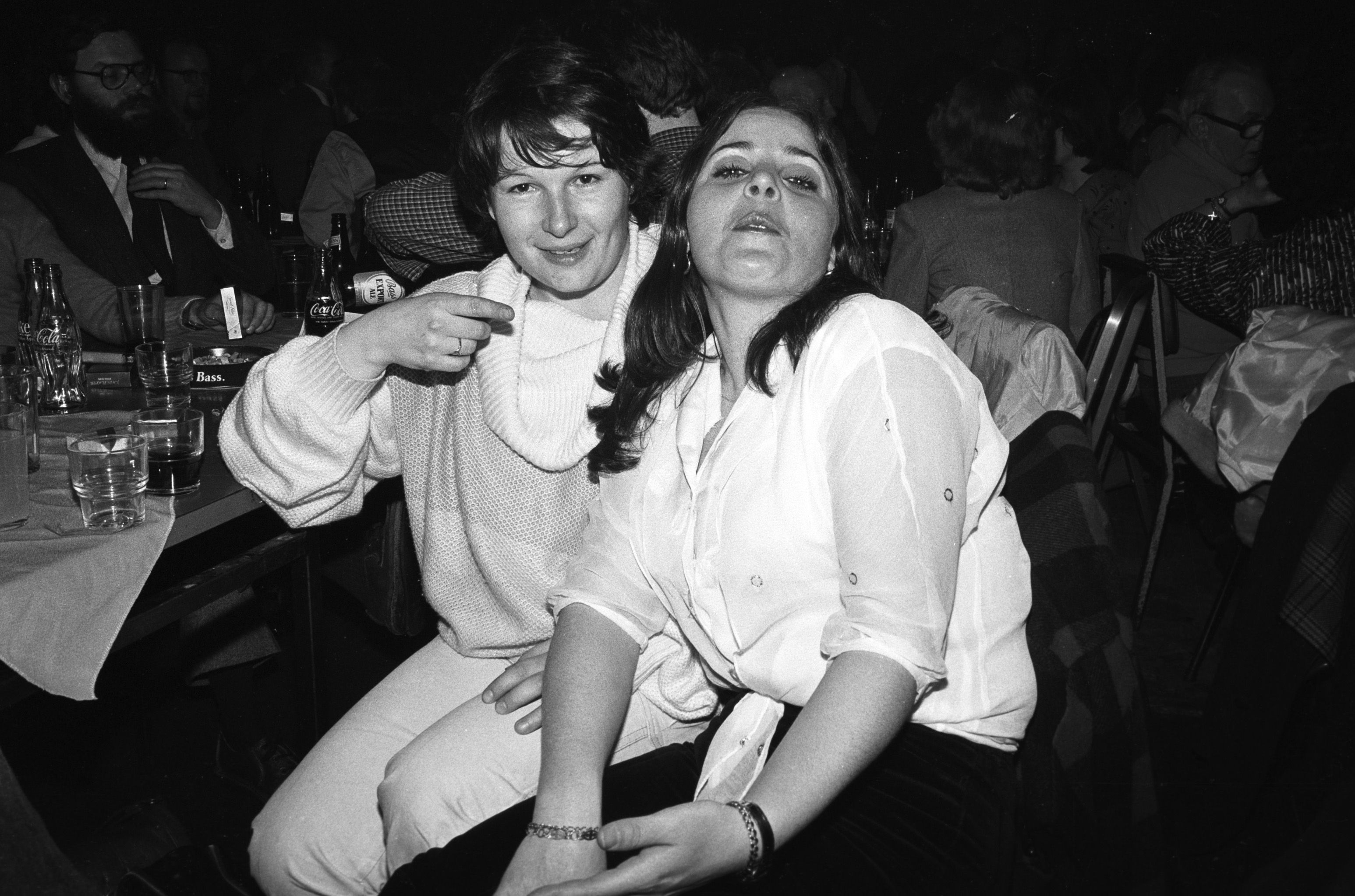
St Michael's Mini League
ST Michael’s Youth Club will run a mini-soccer league at Woodlands Playing Fields, Finaghy Road North, St Michael’s coach Eddie Neeson announced this week.
“We need eight teams,” he said, “and all players must be in Primary 6 or under. If you have, or think you can get a team contact me.
“Over this past six years we have run this league and it gives great satisfaction to see boys who played in the very first league, playing at U-15 level for different teams in the Down and Conor. All boys from 11 years up have leagues to play in and that is why we like to give the 10-year-olds a league of their own. It also gives youth clubs a chance to see if they have any future players coming through in their area.”
The league starts on Thursday May 1 at 6.30. Each team will have two matches every week, on Monday and Thursday. There will be two trophies, league and league cup.
“Remember,” said Eddie, “there are only eight places, so first come, first served.”
“It also gives youth clubs a chance to see if they have any future players coming through in their area.”
Enjoying Ceilí na Casca back in 1980